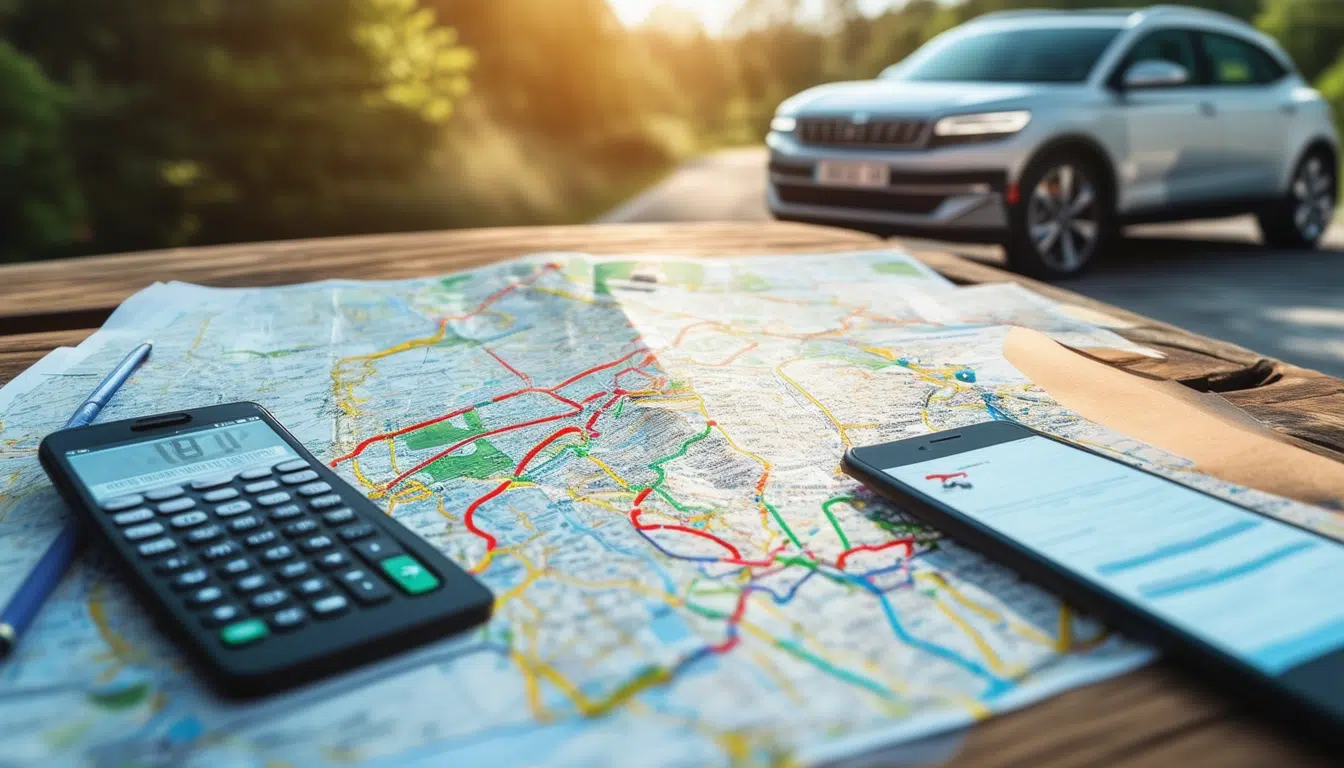Cómo planificar rutas para disminuir el gasto en gasolina

Currently, optimizing routes is essential to reduce fuel expenses and improve transportation efficiency. Through proper planning, it is possible to select the shortest path and avoid interruptions caused by traffic or poorly maintained roads. Implementing strategies such as maintaining a constant speed and minimizing sudden accelerations and braking are key to achieving significant savings in fuel consumption. By using tools such as navigation software and mapping applications, it is possible to optimize the journey and, consequently, reduce operational costs.
Efficient route planning is a key strategy to reduce gasoline consumption. This approach will not only minimize operational costs but also contribute to more sustainable transportation. In this article, we will explore various techniques and tools to optimize routes, ensuring a more economical and ecological use of fuels.
The importance of choosing the right route
One of the most important decisions when driving is choosing the route. Opting for well-maintained roads and avoiding heavily trafficked routes can make a significant difference in fuel spending. Using route planning software allows for calculating the most efficient journey, taking into account stop points and estimated travel time.
Using technology to optimize routes
Applications like Google Maps provide valuable real-time traffic data, which allows for adjusting the route based on current conditions. Moreover, some of these platforms also offer alternative routes that may be less congested, thus contributing to lower fuel consumption.
Strategies for efficient driving
Route planning is not the only aspect that affects fuel consumption. The way of driving also plays a crucial role. Maintaining a constant speed, avoiding sudden accelerations and braking can significantly improve fuel efficiency. Using the cruise control system on long roads helps maintain a steady speed, reducing fuel spending.
Avoiding unnecessary idling
Leaving the car in idle for prolonged periods can be detrimental to fuel performance. Whenever possible, it is advisable to turn off the engine if a significant wait is anticipated, which not only saves fuel but also reduces harmful emissions.
Fleet knowledge and regular maintenance
In the case of vehicle fleets, it is essential to monitor and maintain each unit in optimal condition. Regular maintenance, including checking the tires, the condition of the engine, and other components, ensures that vehicles operate efficiently and contribute to reducing fuel consumption.
Long-term route planning
Considering the geography of the area is another aspect that facilitates route planning. Choosing paths that avoid mountainous terrain and opting for rural or highway roads can result in better fuel performance. These decisions are critical, especially for transport companies looking to reduce costs.
Additional tips for saving fuel
In addition to route planning and vehicle maintenance, there are other tips to consider for optimizing fuel consumption. Maintaining a smooth driving style, engaging drivers in training programs on efficient driving techniques, and improving the vehicle’s aerodynamics are just some of the strategies that can be implemented.
Discover more about these practices in other resources, such as the guide on how to save fuel on your daily trips and other practical tips for optimizing fuel use on your journeys.
Conclusion
Intelligently planning routes and adopting efficient driving habits is essential to reduce fuel spending. Implementing these strategies will not only help save money but also contribute to a more sustainable future in transportation.
Proper route planning is essential to reduce fuel expenses and improve transportation efficiency. By using advanced navigation tools, it is possible to identify the shortest route and avoid congested roads that not only extend travel times but also increase fuel consumption. A good technique is to consider the condition of the roads and choose those that are in better shape, which in turn can provide a smoother and less taxing journey for the vehicle.
Additionally, it is crucial to avoid sudden acceleration and braking. Driving consistently and moderately not only helps keep fuel consumption at acceptable levels but also contributes to the proper maintenance of the vehicle. Implementing the cruise control system when possible allows for maintaining a uniform speed, resulting in more efficient fuel consumption.
Another aspect to consider is fuel savings when planning the sequence of stops. Using software that optimally organizes stops can mean fewer kilometers traveled and, therefore, less gasoline consumed. Being attentive to traffic reports and weather conditions is also crucial to avoid setbacks that may affect fuel performance.
Finally, keeping vehicles in good condition is another fundamental pillar for optimizing fuel consumption. Regular maintenance, such as checking tire pressure and engine condition, ensures that the vehicle operates properly, which also translates into less fuel expenditure. By implementing these strategies, not only is a significant savings in gasoline achieved, but also a more conscious and responsible driving approach towards the environment is promoted.



